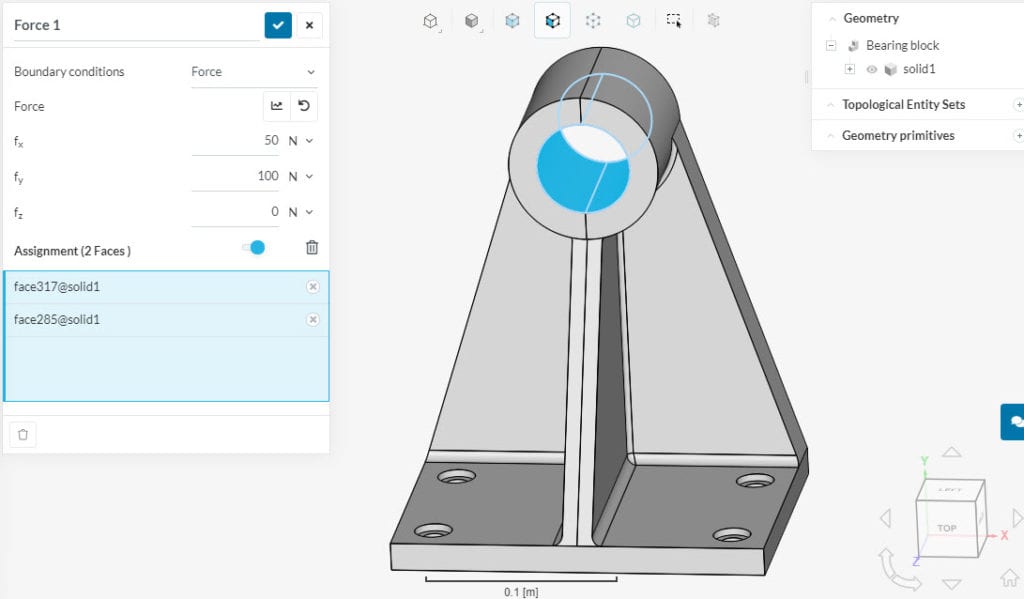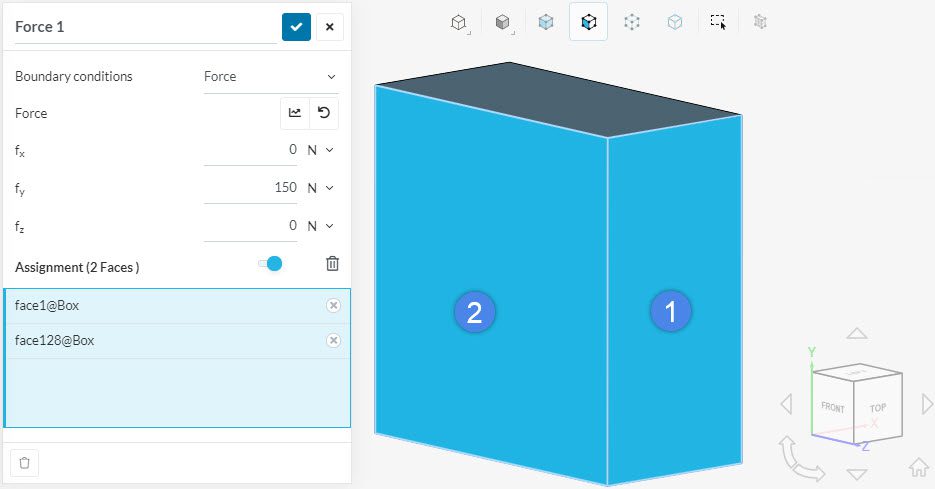Documentation
The force boundary condition applies a distributed force to the structure. It can be assigned to any number of faces of a structure. This boundary condition works as a surface traction on each element of the assigned topological entity and its value is proportional to each element’s area.
Please note that the force components should be defined based on the global coordinate system. Each force component can be applied as a constant value, function, or table. For function or table input, the value can depend on time or spatial coordinates.
This boundary condition is supported for the following analysis types:
The figure below illustrates what happens when a force boundary condition is assigned to multiple entities:

In the configuration above, since both faces have the same surface area, a force of 25 Newtons in the x-direction and 50 Newtons in the y-direction will be applied on each face.
In Figure 2, the face 2 has twice as much area as face 1. As a result, the 150 Newtons are split proportionally to their areas, therefore 50 Newtons are applied to face 1, whereas face 2 receives 100 Newtons.

In nonlinear cases, we typically apply a force that varies with respect to time, using either table or formula input. On the other hand, for static cases, the force applied has a fixed value.
If you are interested in seeing more examples with this boundary condition, make sure to check the SimScale Tutorials. There, you will find examples for both linear and nonlinear analysis using a force boundary condition:
Last updated: September 14th, 2022
We appreciate and value your feedback.
Sign up for SimScale
and start simulating now